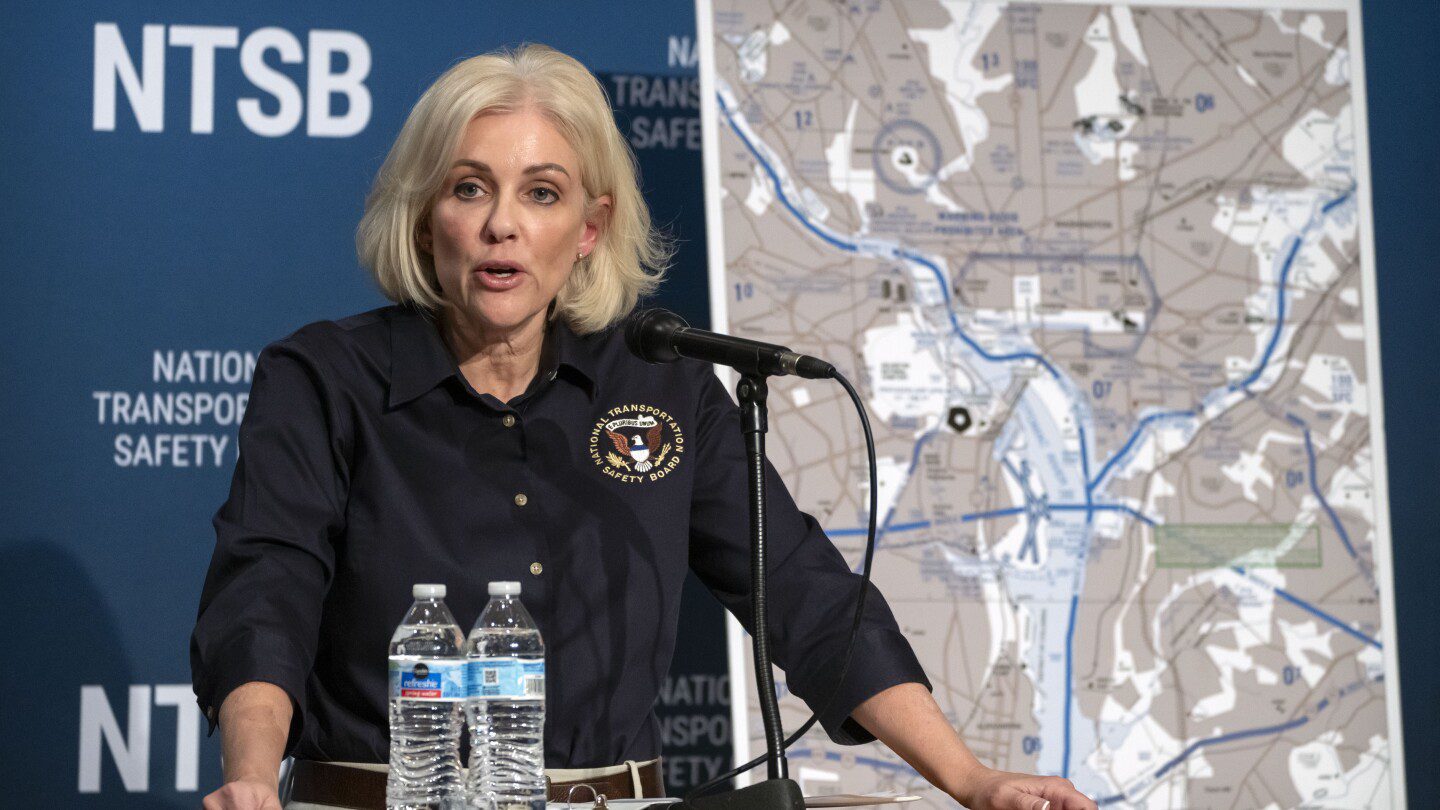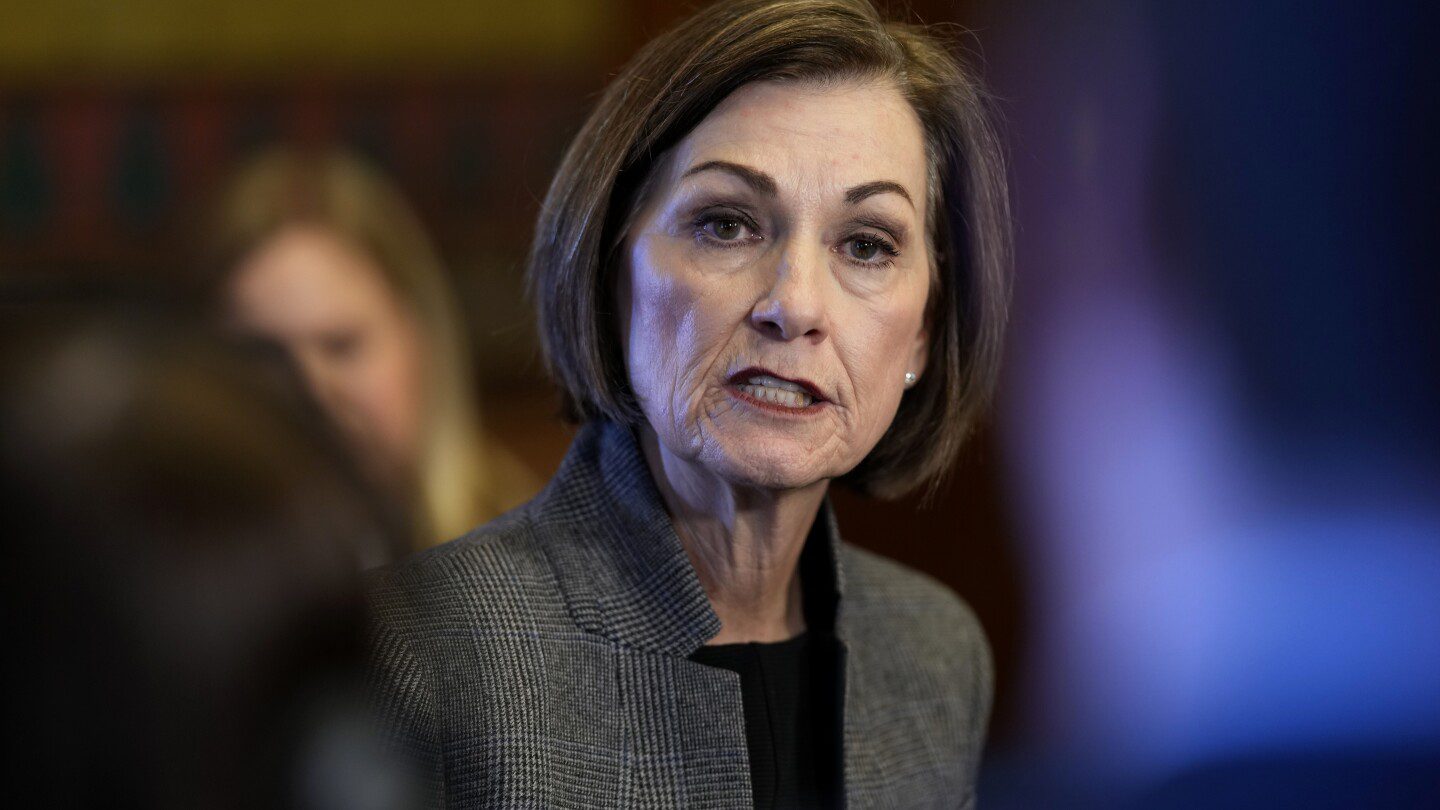
WASHINGTON (AP) — Investigators revealed that the Army helicopter involved in a midair collision with an American Airlines flight near Ronald Reagan National Airport in Washington, D.C., might have encountered incorrect altitude readings shortly before the incident. Additionally, the crew may have missed crucial air traffic control instructions directing them to position themselves behind the airplane, according to findings shared on Friday.
Jennifer Homendy, Chairwoman of the National Transportation Safety Board (NTSB), informed reporters that recordings from the Black Hawk helicopter indicated a possible disruption in radio communication, leading to confusion about the required maneuvers just prior to the tragic crash on January 29, which resulted in the loss of all 67 individuals aboard both aircraft.
“The transmission was cut off— it was interrupted,” Homendy stated, emphasizing that the crew could not hear the critical instruction to “pass behind the” American Airlines jet due to simultaneous microphone activation.
Furthermore, it appears the helicopter pilots might have overlooked part of another message where the control tower mentioned the jet was turning towards a different runway, she added. On the night of the incident, the helicopter was undertaking a “check” flight, as the pilot was completing an annual assessment while also using night vision goggles, which investigators believe the crew wore during the flight.
The definitive report from the NTSB regarding the collision is expected to take over a year to finalize. Homendy warned that the investigation is ongoing, stating, “We’re only a couple of weeks out from the crash. There’s still a significant amount of work to do.”
This incident marked the deadliest aviation accident in the U.S. since 2001, when a jetliner impacted a New York neighborhood shortly after takeoff, claiming 265 lives.
William Waldock, a safety science professor at Embry-Riddle Aeronautical University, noted that interrupted transmissions—where a pressed microphone button obstructs incoming messages—are a well-documented issue within the aviation industry. “It’s a recurring problem with radio communications,” he said. However, investigators have yet to determine the extent to which this issue contributed to the crash.
Retired airline pilot John Cox, who is the CEO of Safety Operating Systems, explained that the helicopter pilots had taken responsibility for avoiding the jet two minutes prior when they requested and received clearance to maintain “visual separation,” which meant they needed to keep an eye on the jet’s position. “At that moment, the helicopter is fully responsible for maintaining separation,” he clarified. If they sensed they had missed vital information from the tower, they could have requested clarification.
Questions regarding the helicopter’s altimeters remain unresolved. The collision likely transpired at an altitude just under 300 feet (91 meters), as the airplane descended toward the helicopter, which was operating above its 200-foot (61-meter) restriction for the area.
In the moments leading up to the crash, cockpit exchanges indicated conflicting altitude readings, with the helicopter’s pilot asserting they were at 300 feet (91 meters) while the instructor pilot claimed they were at 400 feet (122 meters), Homendy reported. “We are investigating the possibility of erroneous data,” she stated.
The specific Black Hawk model is equipped with two types of altimeters: one that operates on barometric pressure and another using radio frequency signals sent from the ground. Helicopter pilots typically rely on barometric altitude readings, but the helicopter’s black box records radio altitude. At the time of impact, the radio altitude indicated the Black Hawk was at 278 feet (85 meters), though that’s not necessarily what the crew observed on their barometric altimeters, according to Homendy.
Waldock suggested that night vision goggles may have impaired the helicopter pilots’ peripheral vision, leading them to mistakenly track a plane that took off shortly before the collision. “If they fixated on that departing aircraft, they may not have seen the other plane approaching,” he remarked.
In the final moments before impact, the jet executed a steep climb, indicating an evasive maneuver, as noted by both Waldock and Cox. “This was clearly a last-ditch effort to avoid the collision,” Waldock mentioned.
The Victims
The Army has stated that the Black Hawk crew was highly seasoned and well-versed in navigating the busy airspace surrounding the nation’s capital. The crew comprised Capt. Rebecca M. Lobach of Durham, North Carolina; Staff Sgt. Ryan Austin O’Hara, 28, of Lilburn, Georgia; and Chief Warrant Officer 2 Andrew Loyd Eaves, 39, of Great Mills, Maryland, where O’Hara acted as the crew chief and Eaves and Lobach served as pilots.
Friends and fellow soldiers described Lobach as meticulous and exceptional. The American Airlines jet, which was en route from Wichita, Kansas, and preparing for landing at the time of the crash, was piloted by 34-year-old Jonathan Campos, whose family noted he had aspired to be a pilot since he was three years old.
The passengers on the flight included a diverse group ranging from hunters to students and parents from northern Virginia schools, as well as members of the Skating Club of Boston returning from a development camp for elite junior skaters after the 2025 U.S. Figure Skating Championships in Wichita.
Following the collision, President Donald Trump publicly criticized the helicopter for allegedly flying at too high an altitude. He also pointed a finger at federal diversity and inclusion policies, specifically regarding air traffic controllers. When pressed by reporters, the president could not substantiate his claims. Just days later, Trump shifted his focus, attributing the incident to what he described as an “obsolete” air traffic control system.
___
Sullivan reported from Minneapolis and Funk from Omaha, Nebraska.









